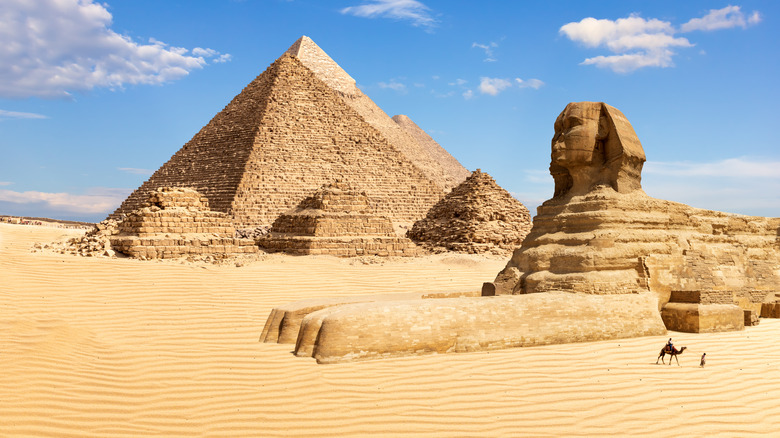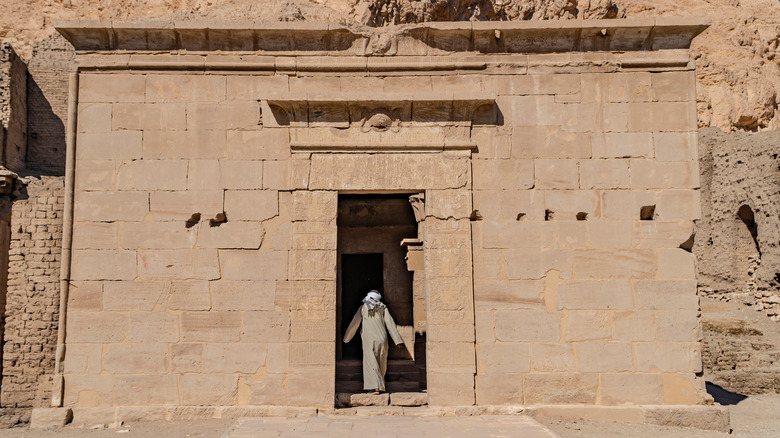What Ancient Egyptian Homes Really Looked Like
The ancient Egyptians created stunning monuments and statues that have stood the test of time, even thousands of years after their construction, in the form of massive stone pyramids known and recognized around the world. Since they were able to design and build these impressive (and imposing) feats of architecture, surely their homes were built with the same mastery of masonry?
Not quite. According to Love Property, typical Egyptian homes were made of a far more humble material: mud. The Nile would flood every year, leaving plentiful stores of mud that could be molded and dried into bricks. Papyrus and reeds were other common construction materials, and as wood was scarce, it was mainly used for ceiling supports and doors. Houses for the commoners were typically one room affairs, often with an open-walled courtyard for cooking and keeping animals. Furniture was rarely more sophisticated than reed mats and some simple chairs.
Houses were different for the elites
An interesting quirk of Egyptian architecture was the near ubiquitous presence of flat roofs (via Ancient Egypt Online). There were a few reasons for this. It was simpler to build, and it also provided a place to lounge and sleep on in the hotter months around Egypt. Some families would have spent as much time on top of their houses as they would inside.
Unsurprisingly, things were much different for the elite. They like to build their houses along the Nile, and painted them white to stay cooler in the hotter months. The most wealthy families could afford to decorate their exteriors with twinkling limestone, and hired artists to paint the interiors with bright, pastel colors. While the more modest Egyptian houses only had one room, the largest and grandest abodes could hold 30, most of which were used to store food. Though homes didn't have running water – at least not how they do today – some did have indoor pools, showing how the concept of luxury is truly millennia old.

